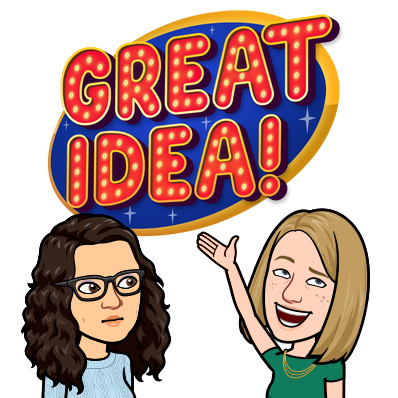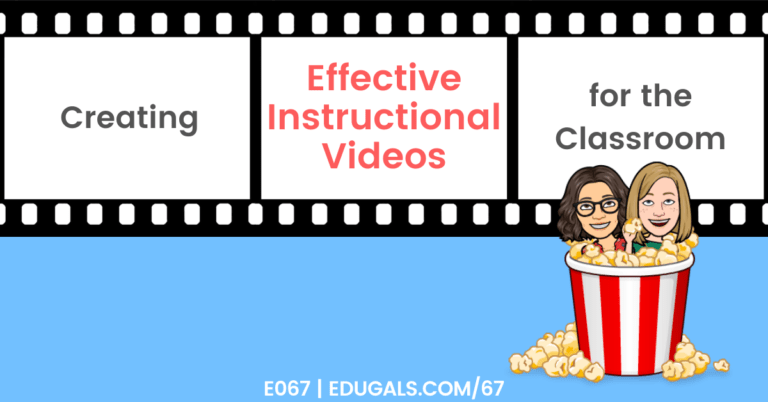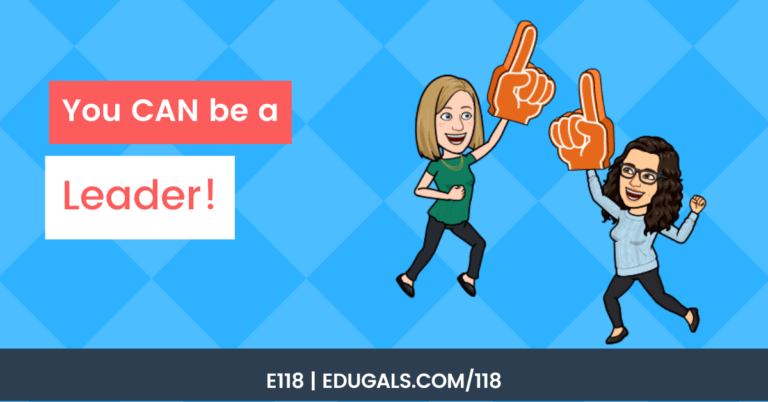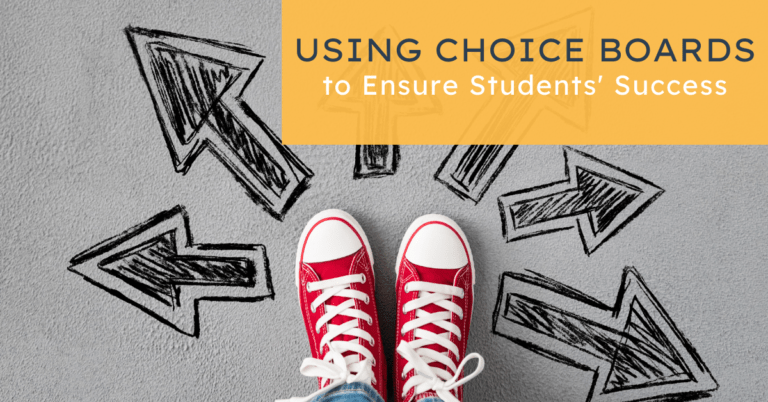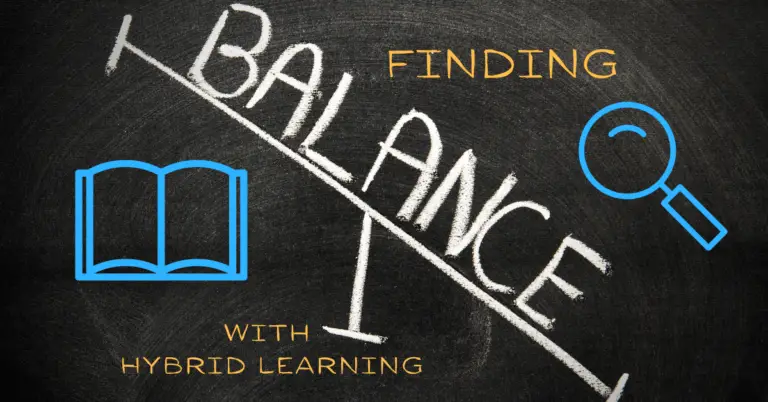[podcast_subscribe id=”7428″]
In this episode, we are giving you our TOP 10 strategies to start ungrading! This will include some easy-to-implement strategies that you can start using right away in your classrooms.
If you like what you hear, then share this episode with a colleague or friend, and make sure you subscribe so that you don’t miss out on any new content! If you are able, consider supporting the show by buying us a coffee!
We would love to hear from you – leave a comment here, OR check out our FLIPGRID!
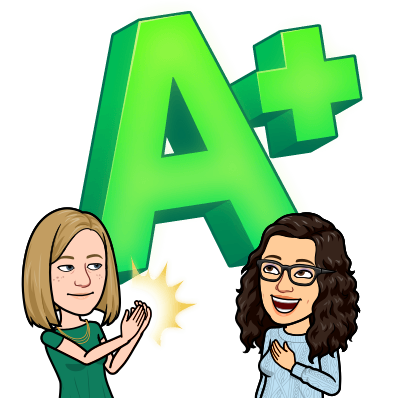
Show Notes
This week, we are talking all about ungrading, and will be sharing our top 10 strategies. These will be ungrading strategies that we have determined to be our favourites, and that we think will you get started on your own ungrading journey in education.
Before we get started, it’s important to point out that there is no right or wrong way to ungrade; it is very open to interpretation and customization. Feel free to take these ideas, do your own research, and figure out what will work best for you and your students.
And if a strategy doesn’t work for you, then don’t feel pressured to continue using it – try something new instead! Ungrading is most effective when the educator and students can experience success, and no two classrooms are the same; find what works for you!
Feedback/Critiques
As you approach assessment and evaluation in the classroom, it’s important to shift the focus away from the grade or mark in order to implement ungrading most effectively. Instead, we need to shift towards a culture of feedback, and using this to help students identify areas of potential growth.
This feedback starts a conversation and a cycle of revision. Students can then take that feedback, and go back and improve based on that feedback.
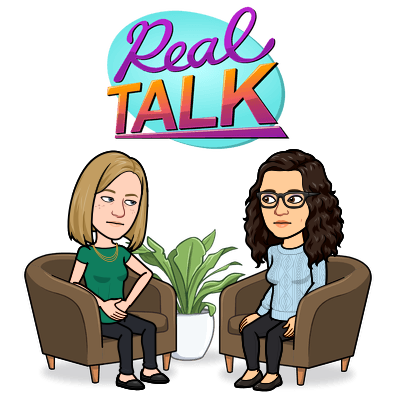
If you aren’t yet ready for ungrading, but you want students to consider feedback, then it’s worth providing feedback without a grade, give time for your students to reflect, and then put the mark on it. This will give the students an opportunity to consider what you have told them, without shutting down entirely because they have the grade.
Research has shown that if you stick a grade on something, while also providing feedback, students will not pay attention to the feedback. As soon as they see a grade, they consider it a one-and-done task, and miss out on an opportunity to grow and further develop their skills.
This ungrading strategy really helps students to develop a growth mindset. They are able to take in their teacher’s comments and suggestions on how they can improve, and eliminates this one-and-done mentality.
There are a lot of great resources out there about how to provide good feedback. Try to focus on facts and/or evidence instead of your opinion of the work, as this will have a much greater impact; state an observation, and follow it up with how the students can continue to develop that particular skill.
It’s also important that teachers aren’t critical of every single error or skill in a particular assignment, as this could really affect a student’s confidence and willingness to consider feedback.
Voice & Choice
Our next strategy is the idea of letting students choose a specific focus or skill for you, the educator, to assess and provide feedback. By choosing one area, they won’t receive an assignment back that is full of red marks or errors that you have identified.
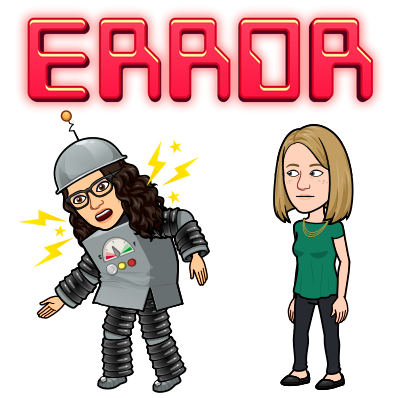
Instead, it gives students the opportunity to select an area or skill that they can really target improvement, and then the teacher can provide feedback on that one area. This doesn’t mean that the student will only even have you provide feedback on a single skill – it’s all about structure!
One idea for incorporating this type of ungrading structure is for the teacher to provide a list of observations, and getting the students to be the detectives, so to speak, and identify the errors in their work. It reduce the red pen marking on assignments, and helps them to further develop their skills at the same time.
It may not always be possible to give students the ability to choose a specific area or skill, but even having the teacher identify one particular aspect that will be assessed in an assignment is helpful.
Peer Feedback
Authentic peer feedback can be quite challenging to achieve in a classroom. It requires a supportive classroom environment, and a positive culture of feedback. This isn’t going to happen overnight, but with explicit activities that target community building and positive relationships in the classroom, it is possible.
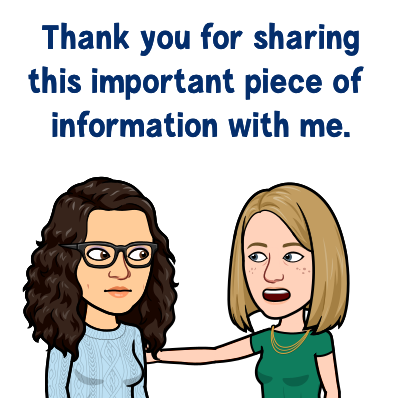
One way to use introduce peer feedback is to have students share one positive thing that they noticed, as well as one thing that might help them to improve. For example, if doing presentations, students might share one thing that they really liked, and then one thing (such as projecting one’s voice, facing the audience, etc.) that the student needs to improve in order to have a more effective presentation.
Sentence stems are super helpful for this practice, as it gives students the structure that they need to provide feedback. Some examples are:
- Wishes and Stars
- One wish I had about your presentation . . .
- One star about your presentation . . .
- 3-2-1
- 3 things I liked
- 2 things you can improve on
- 1 question that I have
Authentic peer feedback is an amazing strategy for ungrading. It helps students to identify and provide one another with comments about skills that need to be improved. It can start off simple – it doesn’t need to be a complex process. The goal is to create that safe space for students to talk to one another and provide constructive feedback for their classmates.
Reflections
Reflections are such a powerful ungrading tool for educators to use in the classroom. It can be a simple Google Form, where students share one thing they feel they did well, one thing that they are going to improve for next time, and their next steps.
This simple act of reflecting can have such a big impact on a student’s ability to identify and improve their learning. It engages them more effectively in thinking about what they know, and what they don’t know, and making a plan to fill those gaps in order to experience growth and improvement in skills.
Reflecting can also be as simple as identifying one thing that students have learned. It’s all about starting and engaging in a conversation that has students thinking about their learning, and the next steps to improve. d
These reflections can also be used in entrance or exit tickets, which we spoke about in our episode on Trauma-Informed Strategies.
Bringing in goal setting through reflection is also helpful in implementing ungrading in the classroom. Based on their own observations, students can set goals for themselves for future assignments, or specific areas/skills that they want to target.
Minimizing your Scale
The next strategy for ungrading is minimizing your scale. When we look at how we mark, we need to reconsider this 100-point scale that is used, and move towards something that is easier for students to navigate, understand and see what is expected of them to be successful.
The 100 point scale is biased towards failure. It skews the scale so much for students because if they do poorly on one assignment, it makes it difficult for them to recover and bring that mark up.
For example, a single point rubric, such as those used in mastery classrooms, set up clear success criteria that lays out exactly what the teacher is looking for in a task. It also allows students to see what they need to do in order to be successful.
This single point rubric removes the pressure of the traditional numbered scale, and instead shifts the focus towards what is needed in order to be successful.
It doesn’t have to be a single point rubric; there are a variety of options available for teachers to consider as they implement ungrading practices. Teachers could use a standards-based grading scale with 4-5 levels; could also be a four point scale; or it could also be a three point scale (mastered, getting there, not yet). It’s all about looking at the level where students have been working, and using that to inform grading on work.
In Ontario, we do use a four level system that is then translated to the traditional 100 point scale, so perhaps it wouldn’t be an effective practice to use a four point scale. Instead, you may want to consider a three or five point scale that shifts away from concentrating on overall grades, and towards skill acquisition and how to improve. It really needs to look and feel different from what traditional rubrics.
These scales also tie in well with feedback loops, and creates opportunity for conversations and reflection about students’ learning.
There is a lot of information out there about potential scales to use for rubrics, so find one that works best for you and your teaching situation, and give it a try! As always, if it doesn’t work well, then try something different.
Shift in Language
This strategy is perhaps the most powerful option to consider in ungrading. Language can have a very big impact on students, and small shifts can go a long way to helping educators and students to rethink assessment and evaluation.
One example of a shift in language is changing “marking” and “grading” to “assessing.” Or even more effective is the shift in student language from “what did I get wrong?” to “what did I learn.”
By focusing on more positive and growth mindset-related language, we can really shift how teachers and students experience assessment and evaluation.
There are many phrases that we use without thinking that tend to have more negative connotations, such as “yeah, but” – it builds in an excuse or rebuttal and that carries with it a negative or defensive association. Shifting this to “Yes, and” is a simple and effective way to change this to a more positive tone or approach.
There are so many small tweaks in language that will make a big difference to students and educators alike.
Another such word is “yet.” It allows you to acknowledge an area that needs growth, and keeps it open to the possibility of growing or developing. Without that “yet” it can be quite negative or closed off to possibility and improvement.
Language is tough. While there are some simple shifts, language is huge and can have such a significant impact on student outcomes.
We need to be very careful of language and how we structure our rubrics. Instead of changing these qualifying words, consider building up a learning progression with clear expectations of what would be seen at various levels or steps of skill progression. Rubrics should be helpful tools that clearly show students the expectations for a task; language is key to constructing effective rubrics.
Practice of Self-Assessment
This strategy can be such a tough concept for students, but it can be a really helpful and useful strategy in implementing ungrading in your classroom.
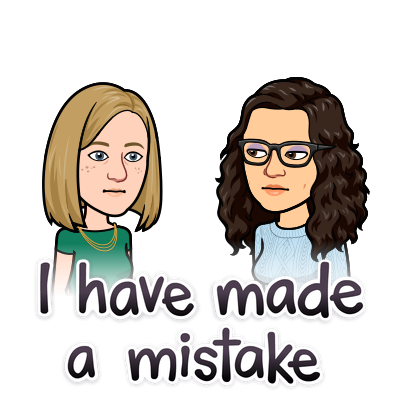
This practice gives students the responsibility to go through and self-assess their work, identifying their mistakes and giving themselves feedback for improvement. They can then look at the rubric, and self-assess where they are based on the success criteria. This can also then be paired with reflection, where students share with you the level they feel they are at, and how they have demonstrated that level of learning, and how they can work to improve.
This strategy doesn’t need a huge change in practice. Instead, it’s a small tweak to put the onus back on the students to help them learn.
Ditch Zeros & Late Marks
This strategy is seemingly simple, but also quite challenging depending on the teaching team/environment.
In Ontario, there is protocol in place to help guide and determine when late marks and zeros can be used, however it’s worth revisiting this practice and how it affects students.
There are so many factors and reasons that affect a student’s ability to complete and submit work: family responsibilities, work obligations to support family, not understanding content, mental health or physical health struggles, etc.
In many ways, the use of a zero lets students off the hook. They see the zero, and feel like it is a permanent and complete action, so to speak, and so they don’t have to go back and complete the learning and the task. It’s also an easy out for educators in some ways, because they don’t have to chase students or figure out how to help them learn and submit that work.
Zeros should certainly be used as placeholders, however it shouldn’t close off the opportunity to complete work. Make sure you have high expectations for each of your students
Late marks, on the other hand, is essentially grading behaviour. It doesn’t actually look at the skills they are learning in your curriculum area, but rather learning skills, which shouldn’t be graded.
Portfolios
Portfolios are a great way for students to gather evidence and demonstrate the progression of their skills throughout a course, making it a great strategy to consider when implementing ungrading in your classroom.
It shifts the responsibility to the students to select the pieces of work that most accurately and consistently reflect the skills that they have learned throughout a course. This should also be paired with a reflective piece that explains their choices, how it demonstrates their skills, and how it justifies their final mark.
This could also include work that they have self-assessed throughout the course, as well as evidence of how they used that self-assessment to improve their skills.
Conferencing
Conferencing is a great way to connect with students and get them talking about their learning, skills and progress. This can be a very time consuming strategy, as it does potentially require a large block of time.
You can set up time blocks throughout the week to connect with 5 or so students per day, and spread out over a longer time period, or it can be more formal towards the end of a unit or course. There are lots of different options, and depending on your class size, as well as what course you are teaching, it fits really well with ungrading.
While it does potentially require a lot of time, it can be an extremely powerful tool in getting students to talk about their learning, and sharing how they have progressed throughout a unit or course. It build in reflection, self-assessment and many of the other strategies we have shared so far.
These are ten of our top ungrading strategies for educators. Feel free to try any of these out, and tweak them so that they fit for your own classroom. The goal isn’t to take it all on at once, but rather to slowly shift your grading practice one strategy at a time, making small and effective changes.
